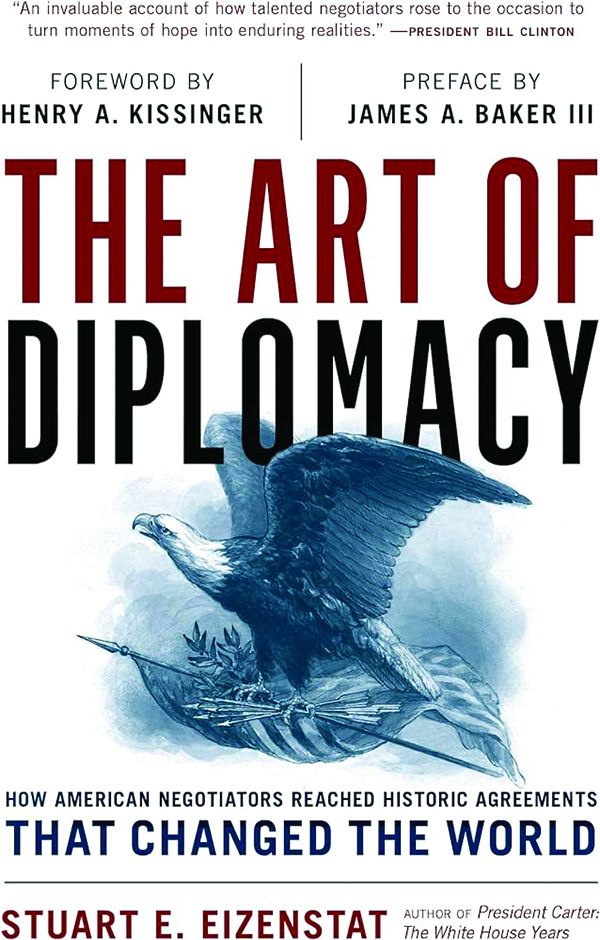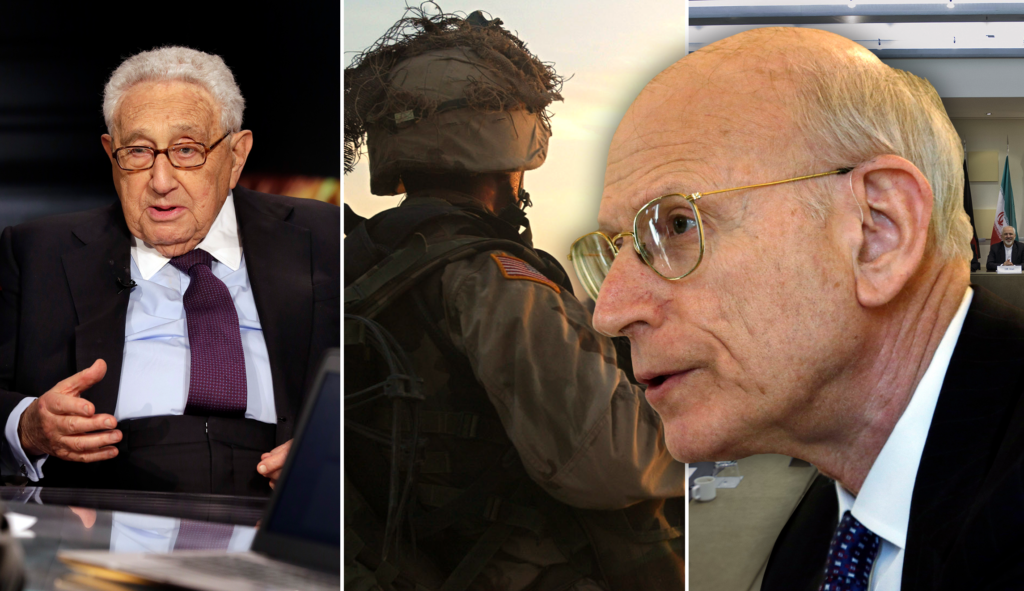
In a geopolitical climate dominated by creeping great-power competition, calls for renewed diplomacy sound misguided. Efforts at peace in Gaza and Ukraine have hitherto fallen on deaf ears as the prospect of negotiations drifts further away amid a current of chaos. Is this the new normal? Is it possible to broker peace when the U.S. global position appears to be so weak?

Stuart Eizenstat, former U.S. ambassador to the European Union and deputy secretary of the treasury, finds answers from American diplomatic history in his new book, The Art of Diplomacy. Eizenstat takes over a dozen stories of American diplomacy and molds them into a broader historical argument and a practical guide for would-be negotiators. The result? A mixed bag of brilliance and bloat.
Art of Diplomacy is an ambitious work with multiple goals. On the one hand, it is meant to be a guide for future negotiators. Eizenstat tries to offer an important lesson or theme in each chapter. On the other, Art of Diplomacy is a history of American foreign policy covering a vast range of topics, from the wars in Iraq to climate negotiations with the EU. These aspirations are only made possible by Eizenstat’s extensive network of interviewees, which form a double-edged sword responsible for the book’s dramatic, almost theatrical highs and the tedious, occasionally frustrating lows.
For a book about diplomacy, The Art of Diplomacy isn’t living in some fairy-tale world in which conflict can be stopped by simply calling for peace. In his sharp conclusion, Eizenstat remarks, “Negotiating means living within the limits of human boundaries of what can reasonably be agreed to under difficult circumstances — not some distant ideal.” He later states that a core part of negotiation is resisting the impulse for a “comprehensive solution” or the influence of political factions seeking a “perfect” outcome. Compromise is often painful.
The best of Art of Diplomacy lies in the details. More than any one-liner that begins with “do x” are the intricate stories of caution and intrigue that dominate Eizenstat’s chosen negotiators. Eizenstat is at his best when he’s showing, not telling. While some of his more explicit advice comes off as obvious (be creative, patient, tough, etc.), he’s positioned through first-person experience to show what these qualities actually mean using dramatic real-world exchanges.
One powerful example is when Eizenstat recounts the encounter between Serbian dictator Slobodan Milosevic and an American general during peace negotiations in Dayton, Ohio:
“Who are you?” Milosevic asked. “I am the allied commander of NATO. … I have orders from 16 democratic nations that if you so much as point a weapon or a tank at any one of my soldiers, that soldier would shoot back and shoot back to kill.”

When done right, Eizenstat gives weight to his recommendations by wrapping them up in a compelling narrative that makes his chapters equal parts enjoyable and informative. Within these narratives, Eizenstat usually excels. Despite being framed as a guide, Art of Diplomacy doesn’t feel like a textbook. It reads more like an anthology, moving from one story to the next at a (mostly) consistent pace — refreshingly, the chapters are largely episodic, giving the reader freedom to skip around as necessary.
The weakest part of the book is when it begins to sound like a memoir. Some of Eizenstat’s chapters recount his personal experiences negotiating, which, given his reliance on his personal network, may sound like some of his strongest storytelling. What better informant could he have than himself? Unfortunately, without someone else to trim the fat, the pacing slows down, and the novelty wears thin.
Despite the book being written recently, Eizenstat has surprisingly little to say on contemporary politics. He critiques the Afghan withdrawal and only briefly comments on the Israel-Hamas war by suggesting it will take more time on the battlefield before both sides can consider a ceasefire. Political bias notwithstanding, he makes a valiant attempt to avoid telling the reader what to believe or to have a more dovish outlook of the world. However, the bias can sometimes overwhelm. Eizenstat admits to his own bias and works to conduct interviews across the aisle. In practice, however, the book has key blindspots that can take the wind out of Eizenstat’s sails and defang his arguments.
One of Eizenstat’s most fascinating, yet disappointing, chronicles concerns the negotiations surrounding the Iran nuclear deal. Eizenstat calls upon various contacts intimately involved in the matter to weave an incredible story of the unbridled determination and emotion of negotiators going into a yearslong process of reaching a deal with Iran. Allies were undermined, sanctions lifted, and tears shed — mere tolls to pay on the long road to a permanent deal. Near the end, as the narrative goes, a once-in-a-generation deal is forged only to be cut down by its conniving political foes. Republicans schemed to tank the deal before diplomacy was even allowed to pay off finally. The chapter ends with Eizenstat venting his frustration about how the Trump administration made the diplomatic blunder of the decade by canning the deal.
CLICK HERE TO READ MORE FROM THE WASHINGTON EXAMINER
And here is the problem. Eizenstat spends a remarkable amount of time recounting the details and nuances of the negotiation. He knows so much that he can keep you glued to the negotiator’s table while keeping you as far as possible from Capitol Hill. Once it came to the question of the Iran nuclear deal’s political sustainability, the rigor and energy of Eizenstat’s analysis vanished into the wind. This may be acceptable as the cost of common partisan bias, but a key point of Eizenstat’s mantra is to negotiate within the constraints of what’s politically possible — which clearly failed to happen. The problem that led to his misanalysis is simple: His network largely stopped at the boundaries of the negotiation itself.
Stuart Eizenstat’s Art of Diplomacy is a mixed bag but worth reading. When Eizenstat is in his element, his network extends well over a topic, and the content is well moderated, the results are stunning. This accounts for most of the book’s 12 chapters, which cover everything from Kissinger to the Kyoto climate negotiations. The partisan bias is present but not all-encompassing, and the Art of Diplomacy will assuredly be a fun yet distinctly informative read for anyone interested in U.S. diplomatic history or even foreign policy more generally. As a guide for future diplomats, Art of Diplomacy also accomplishes its mission. But only if you read between the lines.
Jackson Lopez is a student at Bard College.
Scroll down to leave a comment:








